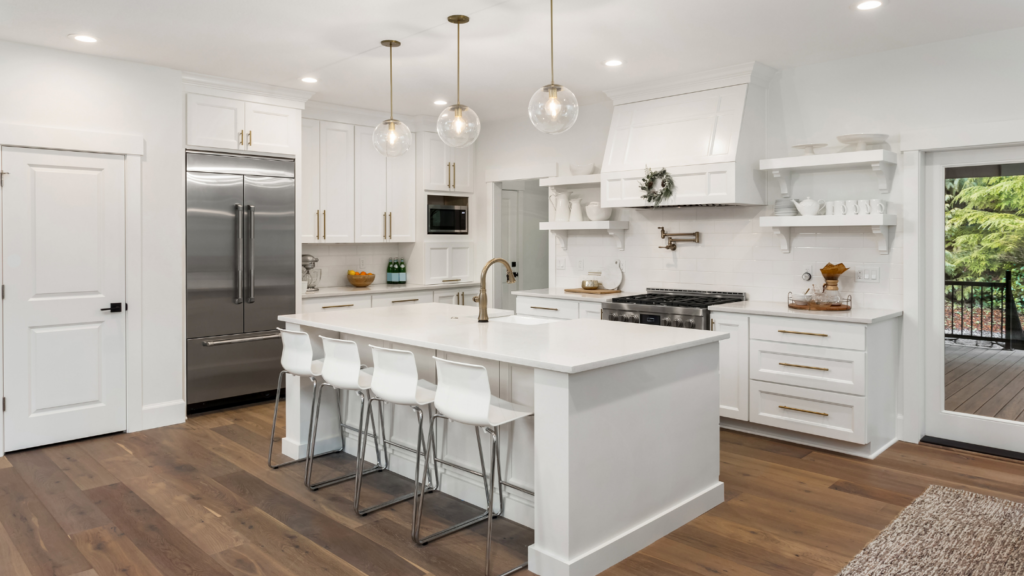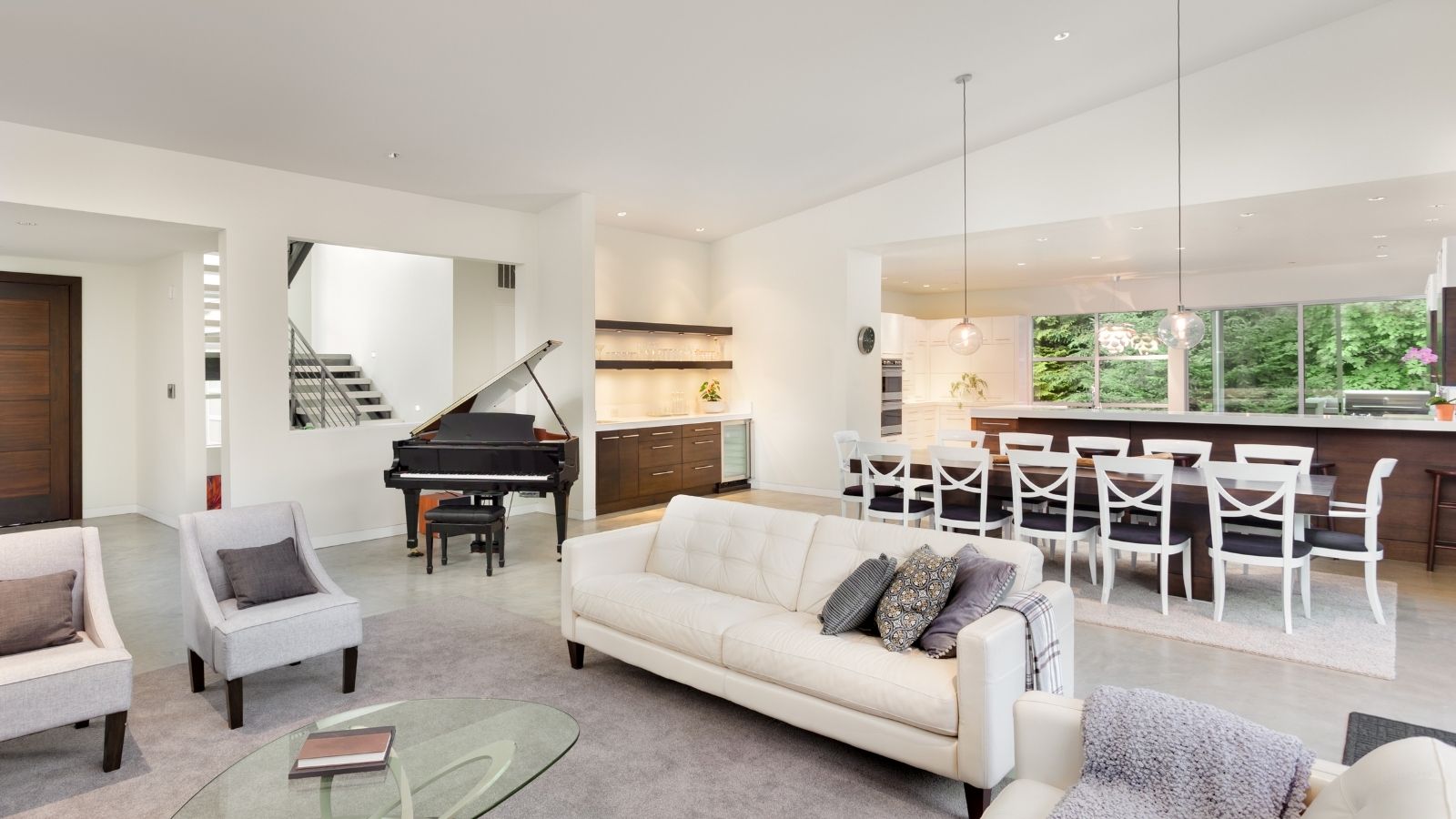Dressing your house for success is the best way to ensure that buyers get the whole experience — to see the property’s most attractive features. It’s similar to you getting dressed up for an interview, date, business meeting, or social engagement. You want to dress your house to impress. This is called staging.
Here’s what you need to know about how to stage your house.
Step One: Remove the Clutter
Clutter equals anything you no longer wear, use, or need. This includes old paperwork, clothes that no longer fit, ignored toys, trash, and anything that you won’t require to access before you move. It’s a great time for a yard sale or donation.
To simplify, work one room at a time and commit to de-cluttering it within a specific time frame on a certain day, and then move on to the next.

Take into the room with you a trash bag, a box or file for important paperwork, a box for photographs and keepsakes, and a bag or bin for donations/yard sale items. By the time you’re finished, all that should be left is the bare minimum of clothes and shoes in the closet, nothing on the walls, nothing under the bed, and only the necessities in the dresser.
Give yourself a little extra time for nostalgia. It can be an emotional experience to declutter your house room by room.
Step Two: Remove Your Personal Belongings
Your goal when staging is to create a space that is absolutely neutral. Although it’s difficult to start peeling your personality from your house like wallpaper, it’s important to allow potential buyers to envision themselves living there. If they have different belief systems than yours, such as a difference in politics, religion, or sports, you could risk losing the sale by offending the buyer.
If you have a garage, that’s a great place to organize and store boxes of personal effects before a move. If not, you may consider renting a storage unit.
Think about furnishings, too—the less furniture that’s in the house, the better. Big, bulky, or extra pieces of furniture make rooms feel darker and smaller than they actually are. If you’ve got an old china cabinet, display case, extra chairs at the dining table, or other big pieces, this is a good time to put those in storage, either in your garage or in a rented storage unit.
Step Three: Give the Entire House a Deep Clean
Clean everything or hire someone to clean the house for you. Your goal should be to get the house as clean as possible as if it were new.
This means bleaching bathtubs, sinks, and toilets, wiping down baseboards and crown molding, dusting ceiling fans and air vents, scrubbing under the sinks, walls, stairwells, windows and windowsills, and shampooing carpets.

Make sure there are no odd smells or odors coming from anywhere, like around the trashcans or under the sinks.
Step Four: Don’t Forget the Curb Appeal
Curb appeal is essential. People base their decisions largely on their first impression of a house – in person or on the internet, which comes in the form of curb appeal.
Power wash the exterior of the house so that it’s free of any dirt or grime that builds up over time.
If there’s trash, debris, or toys in the yard, clean those up first. Make sure there are no weeds, overgrown bushes, and if there’s a lawn, make sure it’s green and mowed. For an added touch, plant fresh flowers along the walkway or near the door.
If you have nice outdoor lawn furniture, you may want to leave it out and arrange it into conversational areas. This can add the feel of more living space and show the potential for outdoor enjoyment and socializing.
Step Five: Accessorize and Accentuate
Consider adding a brand new “Welcome” mat at your front door and placing live plants or potted flowers beside it.
On the kitchen table, place a live bowl of fruit and perhaps a few baked goods on the counter (which also adds another level of warm invitation with a sweet aroma).
In the living room and bedrooms, use potted plants to make areas look lively.

You can give your bathrooms a spa-like appeal by using neatly folded, fresh, crisp, white bath towels, hand towels, and washcloths. You can also add candles and plants to create more ambiance.
Open the blinds or curtains in every room to let in the most natural light. If there’s a unique element to your home, make sure it’s noticeable to buyers.
Step Six: Additional Ways to Increase the Value of Your Home
There are several inexpensive things you can do to make elements of your house look brand new that can add perceived value for potential buyers and may add actual value during your appraisal.
Appraisers tend to gauge a home’s value in $500 increments. That means that a few dollars in upgrades could equate to hundreds in returns. Here are some ideas.
- Replace doorknobs and locks
- Replace light switch covers
- Replace socket covers
- Replace window screens
- If there’s a screen door, replace it, if necessary
- Recaulk windows, sinks, toilets, showers, and tubs
- Make sure there’s a clean air filter; it signals to the appraiser that you’ve maintained the system well.
The Bottom Line
To help your house sell for a pretty penny and to sell quickly, stage your home so it looks it’s very best. Declutter and depersonalize, which are often the hardest parts. Deep clean or hire a company that can do it for you. Accessorize your house and accentuate its best features.

Pay particular attention to curb appeal because even online, the first thing a buyer does when they see your property is judged based on the way it looks. If they like the outside, they’re curious about the inside. If they’re discouraged by the outside, they don’t hold out much hope for “charming” or “cute” on the inside.
Your real estate agent is highly knowledgeable about staging practices and can personalize the experience for you by touring your home with you and pointing out areas where you might be able to improve your home’s appearance through staging.
Have Questions? Ask Ethan!
Give Ethan Treglia a call today to learn more about local areas, discuss selling a house, or tour available homes for sale.


